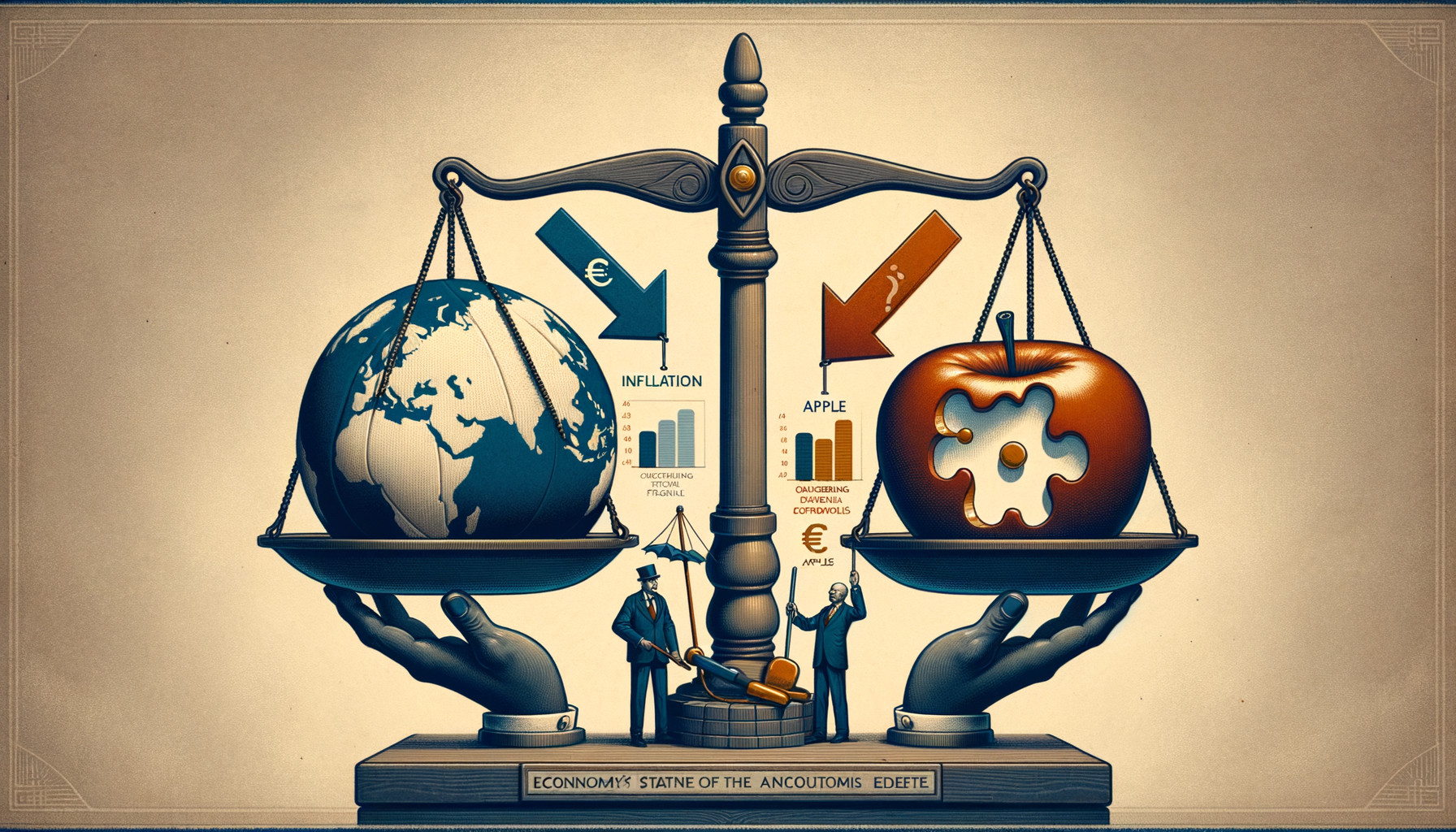“Analyzing the Expected Easing of Euro Zone Inflation vs. Unanticipated Core Figures”
Eurozone economies recently faced a slight reduction in inflation levels, along with underwhelming core figures. This development, while predicted, is indicative of potential economic vulnerabilities that could prevail in this significant region encompassing 19 European countries using the Euro currency.
Inflation is a pivotal economic indicator, signifying the rate at which the general price level for goods and services is rising. While minor inflation can be beneficial, preventing deflation and stimulating spending, excessive inflation can erode purchasing power, causing economies to stagnate. Thus, managing inflation is essential for economic stability.
The Eurozone’s inflation dipped slightly recently. The decrease was expected by economists who anticipated this due to prior analytical data and trends. However, a closer inspection of the data reveals worrying figures. Core inflation figures, which exclude volatile prices such as food, energy, alcohol, and tobacco, were notably disappointing, hinting at broader economic issues.
Before diving into the details of the matter, it is essential to understand the role of core inflation figures. These figures provide insight into long-term price trends, filtering out short-term fluctuations caused by seasonal pricing variations in certain sectors. Discrepancies in core inflation relative to overall inflation could indicate underlying economic complications not apparent on the surface.
The Eurozone’s lackluster core inflation figures raise concerns about economic performance within the region. This could be symptomatic of slow growth, accumulated debt, or weak consumer demand, among others. Despite the slight fall in inflation being justified by economists, this underwhelming performance in core figures necessitates a diligent look at the region’s overall economic health.
Governments and central banks often respond to such economic shortcomings by adopting monetary policies to stimulate economic growth. The European Central Bank (ECB) will play a significant role in maintaining stability within the Eurozone. They may need to consider potential strategies such as lowering interest rates, implementing programmes designed to pump money into the economy, or purchasing government bonds to lower yield and stimulate investment, among other things.
Lowering interest rates could be an effective measure in such circumstances. It encourages borrowing and discourages saving, thereby increasing spending and promoting economic growth. Simultaneously, it can result in increased inflation, which the Eurozone is aiming to control.
Another possible measure involves injecting money directly into the economy, colloquially known as quantitative easing. This injection can be achieved by purchasing significant amounts of government bonds, thus increasing their prices and reducing their yield. This measure could potentially lower borrowing costs and stimulate investment and spending.
The decision of the ECB to implement these or alternative strategies demands careful consideration. Each has its benefits and drawbacks, and their effectiveness depends on various factors, including the overall health of the economy, public confidence, national debt levels, and more.
One factor that the ECB will likely monitor closely is public sentiment. If consumers and businesses feel confident about future economic prospects, they are more likely to spend and invest. Given the inflation rates and disappointing core figures, rebuilding public confidence could be pivotal in reviving the Eurozone’s economic vitality.
Despite the challenges, it is crucial to concede that economic indicators, like inflation, paint only a partial picture of an economy’s health. The Eurozone’s economies, while showing some signs of strain, also exhibit strengths in certain sectors such as manufacturing and services. Therefore, it would be too soon to sound off alarm bells.
While the easing inflation and disappointing core figures imply certain economic vulnerabilities in the Eurozone, they also emphasize the importance of prudent economic management. Consequently, as the ECB grapples with these developments, the course of action it takes could decisively influence the economic future of the Eurozone.
In summary, the latest developments in the Eurozone inflation rate are reminders of the intricate balance required in managing an economy. Inflation rates are critical indicators of economic health, but focusing too narrowly on them risks overlooking other crucial factors, such as growth rates, employment levels, and public sentiment.
Managing an economy, particularly one as large and diverse as the Eurozone, is undoubtedly complex. It requires careful analysis, strategic decision-making, and agile adaptability. Nonetheless, the Eurozone’s response to these developments, led by the ECB, could be a key determinant in how the region’s economy performs in the future. It is a perplexing journey, filled with numerous challenges and opportunities, and observers around the world will be watching keenly as the situation unfolds.
Whichever approach the ECB adopts, the governing bodies must ensure alignment with the ultimate goal of achieving robust, sustainable, and balanced growth. It needs to foster an environment that encourages spending and investment without risking runaway inflation or creating speculative bubbles.
The onus now is on the ECB and other relevant regulatory bodies across the Eurozone, along with national governments, to step up and cope with the challenges introduced by this new economic landscape. A coordinated and strategic response could bolster resilience, propelling the Eurozone towards a more robust financial future amid a period of global economic uncertainty. The path to recovery may be convoluted and fraught with challenges, but with cohesive action and vigilant monitoring, it can certainly be navigated.

